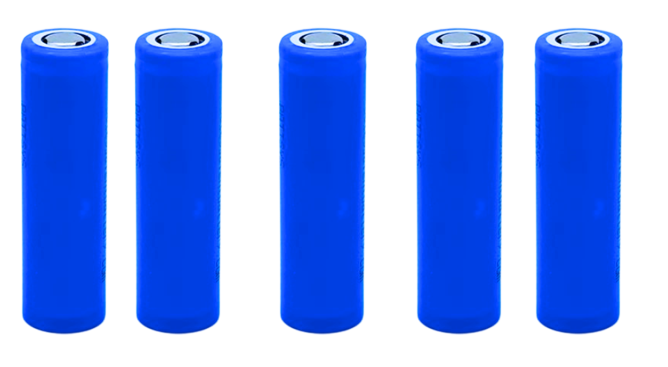What is the difference between power lithium batteries and capacity lithium batteries!
Power lithium-ion batteries need to consider reliability and consistency more, as they require long periods of time (at least 5-10 years), harsh environments (low temperatures in winter, exposure to sunlight in summer, rain and snow), and a large number of battery series and parallel combinations for use. Considering reliability and consistency, assuming a car uses 1000 power batteries, ideally, the car manufacturer hopes that there will be no problems in a scale of 100000 vehicles per model, which means that the probability of power battery problems (safety, storage, cycling, etc.) should be less than one in a hundred million (of course, for the highest end consumer batteries, Apple also requires suppliers to meet this level). Considering reliability, power batteries are generally designed with more redundancy, using thicker separators, foils, and casings, so their energy density is about half that of consumer batteries.

Consumer
lithium-ion batteries do not require long-term reliability (cycling does not need to be done too well, as they will be replaced in one or two years anyway), and generally do not need to be paired and used separately, so there is not much requirement for consistency. However, due to the limited space and high value of consumer smartphones and pads, consumer lithium-ion batteries have strict requirements for size, capacity, energy density, etc.
For safety, power batteries have more external protection circuits, heat dissipation layouts, etc., but they also face more harsh conditions (higher external voltage, larger current, more complex external environment). Consumer batteries have less protection and rely on battery materials and design to withstand various safety hazards on the basis of higher energy density.
I personally believe that high-end consumer batteries use the most advanced technology and materials, while power batteries require more advanced process control, consistency control, and quality management.
1. Different capacities, generally larger power phones and other electronic products have smaller capacities,
2. The cycle life power will also be higher
3. At the temperature control point, the power will have a protective temperature of the battery pack.
There are many types of lithium batteries, such as power type lithium batteries and capacity type lithium batteries. So, what is the difference between these two types of lithium batteries? Many people may not be very clear about it
What is the difference between power lithium batteries and capacity lithium batteries
1. Different voltage levels
In the battery industry, as the voltage increases, the corresponding output voltage also increases, allowing power type lithium battery packs to meet the needs of some high-power devices; The direct effect of parallel connection is to increase the current of the entire battery pack, and the capacity is affected by the current at the output terminal. Therefore, the direct effect of parallel connection is to increase the capacity of the lithium battery pack. The capacity of the battery pack connected in this way is often relatively large, which is the so-called capacity type lithium battery pack.
2. The products used are different
Some large devices require high voltage values because low-power battery packs cannot operate, so power type lithium battery packs should be selected. For example, the electric bicycles we usually use often require a voltage of 48V, which is considered quite high compared to some situations in our daily lives. So it is necessary to use power type lithium battery packs to ensure the operation of electric bicycles. And we usually go to some large supermarkets or shopping malls, some sign lights and backup power supplies, because the power consumption of these devices is not very high, so they generally use capacity lithium battery packs. The application of these two products is different.
3. Different internal resistance
The internal resistance of power type lithium batteries is smaller than that of capacity type lithium batteries. Taking
18650 lithium batteries as an example, manufacturers with good 3-rate discharge generally include PDC with an internal resistance of about 40; Generally, discharge at a rate of 5 does not have a PDC internal resistance of around 20.
